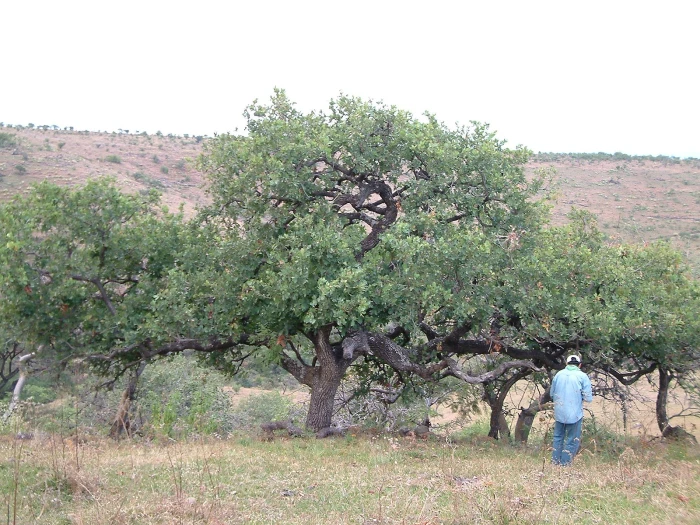Lacy Oak
(Quercus glaucoides)
Lacy Oak (Quercus glaucoides)
/
/

Consuelo Bonfil
CC BY-SA 4.0
Image By:
Consuelo Bonfil
Recorded By:
Copyright:
CC BY-SA 4.0
Copyright Notice:
Photo by: Consuelo Bonfil | License Type: CC BY-SA 4.0 | License URL: https://creativecommons.org/licenses/by-sa/4.0 | Uploader: Consuelo Bonfil | Publisher: Wikipedia Commons




























Estimated Native Range
Climate Requirements for Lansing, Illinois
| This Plant | Your Site | Plant Suitability for Your Location | ||
|---|---|---|---|---|
| • Precipitation | 10" - 144" | 38" | Aquatic | Aquatic |
| • High Temp. | 64°F - 104°F | 85°F | Your summer temperatures are normal for this plant. | Excellent |
| • Low Temp. | 23°F - 67°F | 14°F | Your winter temperatures may be too cold for this plant | Too cold |
This plant may not grow well at your location - your precipitation is too high.
Summary
Quercus glaucoides, commonly known as Lacy Oak, is an evergreen tree native to the oak-pine woodlands and mixed forests of Central and Southwest Mexico. Lacy Oak often grows in open areas or on rocky slopes, adapting to a variety of ecological niches within its range. It can reach up to 10 meters (33 feet) in height with a trunk diameter exceeding 40 centimeters (16 inches). The tree’s leaves are distinctive, being thick, leathery, and up to 15 cm (6 inches) long, with a few shallow, rounded lobes that give it a lace-like appearance. The foliage may turn a bronze color in the fall, adding seasonal interest.
Lacy Oak is valued for its drought tolerance and ability to thrive in a range of soil types, making it suitable for xeriscaping and as an ornamental tree in regions with water restrictions. It is also used for reforestation projects due to its adaptability. In cultivation, it prefers full sun to part shade and requires minimal water once established, thriving in soils with medium drainage. While it is not commonly afflicted by serious pests or diseases, it can occasionally suffer from oak wilt, a fungal disease. Gardeners should be aware of this potential issue and plant resistant varieties or ensure proper care to prevent infection.CC BY-SA 4.0
Lacy Oak is valued for its drought tolerance and ability to thrive in a range of soil types, making it suitable for xeriscaping and as an ornamental tree in regions with water restrictions. It is also used for reforestation projects due to its adaptability. In cultivation, it prefers full sun to part shade and requires minimal water once established, thriving in soils with medium drainage. While it is not commonly afflicted by serious pests or diseases, it can occasionally suffer from oak wilt, a fungal disease. Gardeners should be aware of this potential issue and plant resistant varieties or ensure proper care to prevent infection.CC BY-SA 4.0
Plant Description
- Plant Type: Tree
- Height: 20-25 feet
- Width: 15-20 feet
- Growth Rate: Moderate
- Flower Color: N/A
- Flowering Season: Winter, Spring
- Leaf Retention: Evergreen
Growth Requirements
- Sun: Full Sun, Part Shade
- Water: Low
- Drainage: Medium
Common Uses
Bee Garden, Bird Garden, Butterfly Garden, Low Maintenance, Rabbit Resistant
Natural Habitat
Native to oak-pine woodlands and mixed forests in Central and Southwest Mexico
Other Names
Common Names:
Scientific Names: Quercus glaucoides, Quercus conjugens, Quercus baldoquinae, Quercus glaucophylla, Quercus mixtecana, Quercus cancellata, Quercus cordata, Quercus glaucophylla f. lobata, Quercus glaucophylla f. longifolia
GBIF Accepted Name: Quercus glaucoides M.Martens & Galeotti